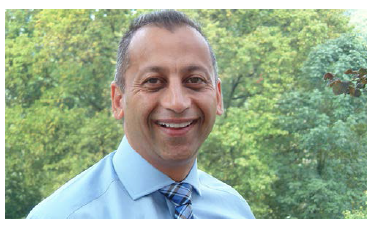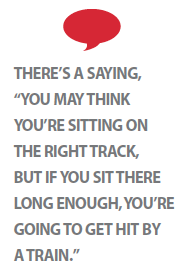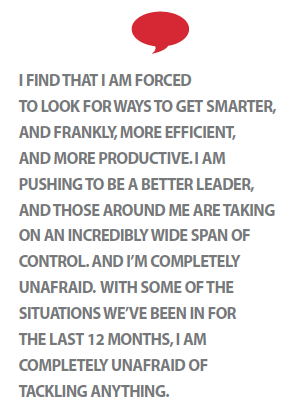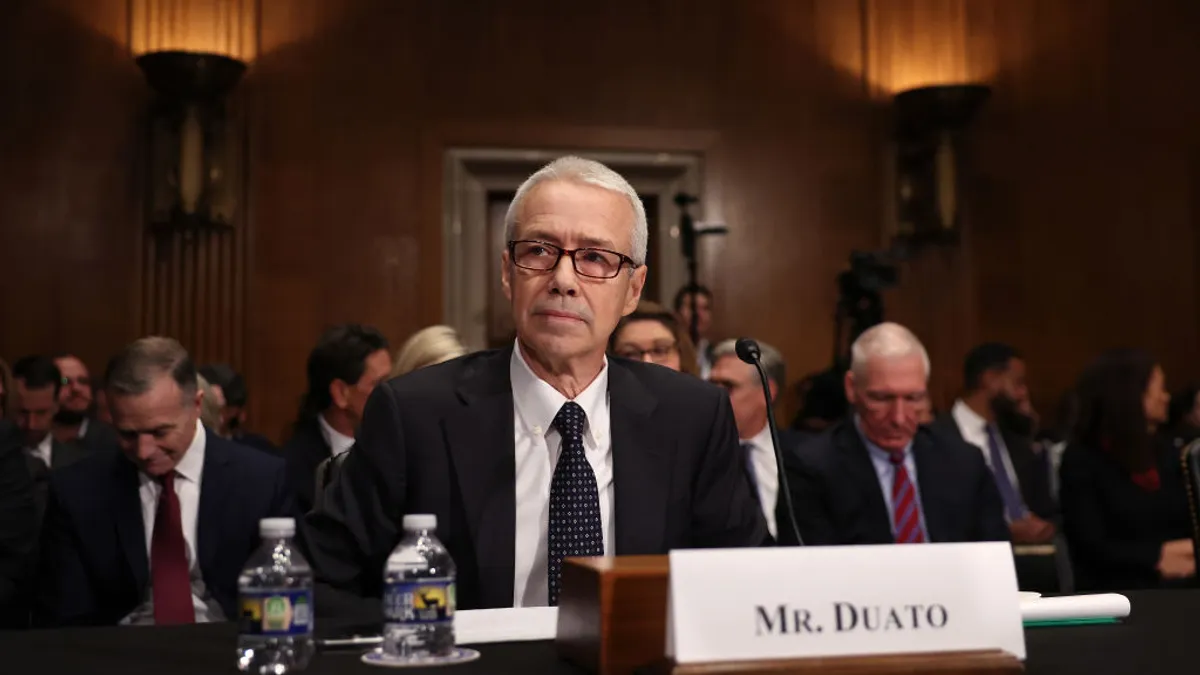In an exclusive interview with PharmaVOICE’s Editor Taren Grom, Cameron Durrant, M.D., current CEO and chairman of KaloBios, talks about taking the helm of the embattled small biotech company amid controversy, bankruptcy, and uncertainty, as well as the personal lessons learned along the way as he rights the ship.
 KaloBios, which is dedicated to advancing medicines for patients with neglected and rare diseases through innovative and responsible business models, has three products in its pipeline: benznidazole for Chagas disease, a parasitic infection caused by a protozoan organism called Trypanosoma cruzi affecting millions of people, primarily in rural areas of Mexico, Central, and South America; lenzilumab, a Humaneered recombinant monoclonal antibody that neutralizes soluble granulocyte-macrophage colony-stimulating factor (GM-CSF), a critical cytokine that drives the growth of certain hematologic malignancies, such as chronic myelomonocytic leukemia (CMML) and juvenile myelomonocytic leukemia (JMML), and perhaps some solid tumors; and ifabotuzumab, a first-in-class, monoclonal antibody targeting the EphA3 receptor tyrosine kinase created using KaloBios’ proprietary Humaneered technology.
KaloBios, which is dedicated to advancing medicines for patients with neglected and rare diseases through innovative and responsible business models, has three products in its pipeline: benznidazole for Chagas disease, a parasitic infection caused by a protozoan organism called Trypanosoma cruzi affecting millions of people, primarily in rural areas of Mexico, Central, and South America; lenzilumab, a Humaneered recombinant monoclonal antibody that neutralizes soluble granulocyte-macrophage colony-stimulating factor (GM-CSF), a critical cytokine that drives the growth of certain hematologic malignancies, such as chronic myelomonocytic leukemia (CMML) and juvenile myelomonocytic leukemia (JMML), and perhaps some solid tumors; and ifabotuzumab, a first-in-class, monoclonal antibody targeting the EphA3 receptor tyrosine kinase created using KaloBios’ proprietary Humaneered technology.
Grom: Cameron, we go back a ways, and you’ve had a successful and diversified career, why tackle the role of chairman and CEO of KaloBios, especially amid all of the controversy?
Dr. Durrant: It’s been quite an adventure, Taren. I had completed my assignment as CEO of ECR Pharmaceuticals — a subsidiary of Hi-Tech Pharmacal — and turned around ECR, which had been losing money every year, into a profitable company in the space of less than 18 months. We were the only division to post revenue and EBITDA growth quarter on quarter. We wound up selling that company to a bigger public company.
So I was looking for my next adventure and opportunity. I was approached by a number of people who were associated with KaloBios, and it was such a mess. When I joined initially in the role of chairman, which was January 7, 2016, about 12 months ago, the company was in bankruptcy and was being delisted. Martin Shkreli, the former CEO, had only been there for four weeks before being arrested. The board imploded, management had scattered, there were no products, no money, no strategy; it was an absolute mess.
Grom: And, so you thought this would be a good thing?
Dr. Durrant: Well, I thought even I can’t make it any worse. Seriously, I think as a leader you can both create a great deal of value and have impact, as well as help craft and develop one’s own personal leadership and learning in two situations; one is working with start-ups and the other is working with turnarounds. And, I have been more attracted to turnarounds recently in my career.
 First of all, this is the hardest I’ve ever worked in my career, including my medical residency. I was brought up to have a strong work ethic. I’m not afraid of hard work. In fact, I am afraid of not having enough to do. But this has really been very, very intense. In any event, I thought really hard about whether I should jump into this. I actually took advice from friends, colleagues, and people who I trust in the industry as to whether I should or not. Most of them said I shouldn’t, even after I accepted the chairmanship role, and essentially the board was an operating committee that required hands-on, hard work.
First of all, this is the hardest I’ve ever worked in my career, including my medical residency. I was brought up to have a strong work ethic. I’m not afraid of hard work. In fact, I am afraid of not having enough to do. But this has really been very, very intense. In any event, I thought really hard about whether I should jump into this. I actually took advice from friends, colleagues, and people who I trust in the industry as to whether I should or not. Most of them said I shouldn’t, even after I accepted the chairmanship role, and essentially the board was an operating committee that required hands-on, hard work.
So why did I make the decision at all? There are essentially three things. Number one, I thought the inherent value of the assets of the company was strong and they just hadn’t been purposed the right way. I believed there was an opportunity to create value and to bring important medicines to patients.
Number two — given the history of the company even with Shkreli’s brief, less than four weeks involvement with the company, which added to the challenge — I thought if we were able to be transformative in our thinking we could help in some small way to reclaim the lost ground in terms of the perception of the pharmaceutical and biotechnology industries with the public. It is upsetting to me personally to think about how the public — not just in the United States, but in many other countries — perceive the pharmaceutical and biotech industry. And I thought that maybe we could help reclaim some of that lost ground.
And number three, I saw this as a unique opportunity to be a transformative leader in the industry and to try out some things that people wouldn’t expect, or wouldn’t even believe possible in a biotech company. Which then meant that, I guess, selfishly, I would help shape and grow and develop my own personal capabilities. So taking something as messy and as tainted as this, and potentially transforming it into something of value was very appealing.
Grom: What are some of those transformations you’re looking to achieve?
Dr. Durrant: First, we set the foundation of the company and the strategy by announcing a responsible pricing model early on in the turnaround. We’re very heartened to see that it’s being reflected in similar commitments by other companies, such as Allergan and Novo Nordisk and perhaps others.
Overall, I think smaller companies can take the lead in trying new things. The beauty of a smaller company, and one of the opportunities that I saw, is we can push the envelope. We tend to think about small biotech as only offering technology to bigger companies — being a bit of a feeder from the R&D point of view. I think small companies can be this, but beyond that, I believe that we can also help generate operational ideas that become transformative to the industry. Responsible pricing is just one of those ideas that’s starting to catch hold now. Transformation needs a lot of different things. Obviously, it needs the ideas, and those ideas don’t necessarily come from big companies. We certainly need big companies to put their shoulders to the wheel and to apply resources, which is what often captures the headlines. But small companies can also come up with ideas.
And frankly, we can also execute with speed. I think speed is the unique differentiator in a small company versus some of the bigger companies. We think that executing bold ideas is not only possible — it’s practical. When tackling big complicated challenges, it’s about chipping away, and if something isn’t working, course correct. We can do that really quickly.
Grom: You talked earlier about this is the hardest you’ve ever worked. You’ve been in the industry for 25 years; what did you find out about yourself that you didn’t know before?
Dr. Durrant: Well, I found out that I am very resilient, which offers me a way of playing out my innate creativity and trying out new ideas. I push myself really hard to ask good questions and to listen. I also find that I am forced to look for ways to get smarter, frankly, more efficient, and more productive. I am pushing to be a better leader, and those around me are taking on an incredibly wide span of control, and I’m completely unafraid. What would you do with your life if you absolutely had no fear of failure? I’ve got to say with some of the situations we’ve been in for the last 11 months, I am completely unafraid of tackling anything.
Grom: So there’s no fear left?
Dr. Durrant: Nope.
Grom: That has to be incredibly freeing in some ways.
Dr. Durrant: It is. What is there to worry about? I don’t have to play games. I don’t have to worry about the size of my office because I don’t have one. I don’t worry about title. I obsess about creating value, doing the right thing by the company, by the shareholders, by the patients. I obsess about making sure that the company is properly financed and that we make a dent on healthcare and on the perceptions that the public has about the pharma and biotech industries.
Grom: Tell me a little bit about what the first 100 days was like for you?
Dr. Durrant: Well I like to plan my first 100 days; I learned that earlier in my managerial career. But this plan changed not just by the day, but almost by the hour if not by the minute. We were very fragile in terms of knowing  whether we would emerge from bankruptcy at all. We faced multiple lawsuits. We had class action lawsuits against the company. The financing was in terrible shape. We had the whole Shkreli factor. We were in bankruptcy court for six months. We had the Office of the U.S. Trustee attempting to wrest control of the company and put it into chapter 7 from chapter 11. We were looking at a potential fire sale of all of the assets of the company if we went into chapter 7. People talk about being comfortable with ambiguity. But the feeling was like sitting in a four-legged chair, and if you lean back a bit too far you have that awful feeling of not knowing whether you are going to tip over or whether you can save yourself. It felt like that 16 hours a day, every day.
whether we would emerge from bankruptcy at all. We faced multiple lawsuits. We had class action lawsuits against the company. The financing was in terrible shape. We had the whole Shkreli factor. We were in bankruptcy court for six months. We had the Office of the U.S. Trustee attempting to wrest control of the company and put it into chapter 7 from chapter 11. We were looking at a potential fire sale of all of the assets of the company if we went into chapter 7. People talk about being comfortable with ambiguity. But the feeling was like sitting in a four-legged chair, and if you lean back a bit too far you have that awful feeling of not knowing whether you are going to tip over or whether you can save yourself. It felt like that 16 hours a day, every day.
Grom: What did that teach you?
Dr. Durrant: It teaches you that you have to be centered. You can’t panic. You have to be resilient. You have to be confident. You have to be very present in the now. You have to apply energy even when things not only don’t go your way, and sometimes they go 180 degrees from what you really want, because things can change in an instant.
Grom: How did the company’s senior management team lend support?
Dr. Durrant: We didn’t have one.
Grom: It was just you and the board?
Dr. Durrant: It was me and the board initially. We had a handful of employees — and I really mean a handful. We had five employees, plus me. So I brought in a virtual management team over time in subsequent months. Now, we have a few more people, not many, and they’re consultants, people who I worked with before. People are the key, of course.
Why did they join? They joined because they are partially as crazy as I am. They’ve worked with me before and they like working with me, and I like working with them. There’s no messing about. There are no politics. These folks are extremely skilled and experienced, and they’ve got nothing to prove in terms of scoring points against each other. Instead, they just want to drive change and execute.
Grom: So what are some immediate next steps for you in terms of the company?
Dr. Durrant: Well, there are a number of things. First we have the bankrupcy behind us. Even the bankruptcy lawyers said it was one of the most, if not the most, complicated bankruptcy case they’ve ever seen; it had an an overlay of the lawsuits and Shkreli’s reputation, which became a real operating impediment. Trust me when I say it was very, very complicated. I’ve learned so much about bankruptcy, distressed financing, what the hourly rates of law firms actually are — stuff I never had to deal with in any other situation or turnaround.
Earlier in my career, a lot of what I did was building the culture. And then in later assignments, it was about culture and performance. And now I feel I have the widest possible picture and experience: it’s about putting it all together: culture, performance, company reputation, and capital markets.
We are focused on three crucial things: to execute on our pipeline to drive our value model; to build our financial strength; and to continue to establish our reputation as a trusted leader in the industry. Within that, we’ve said our three near-term priorities are to accelerate the development of benznidazole in the treatment of Chagas disease; to continue enrolling patients in the company’s ongoing Phase 1 study of lenzilumab for chronic myelomonocytic leukemia (CMML) and potentially a pediatric form of that leukemia, juvenile myelomonocytic leukemia (JMML); and to explore partnering our other proprietary monoclonal antibodies such as ifabotuzumab.
Grom: You noted earlier that you really believed in the company’s pipeline and the potential of the products for patients. What are some next steps to help bolster that company to bring these drugs to the market?
Dr. Durrant: We actually like the semi-virtual model. It’s just much more flexible, and it works when working with people you know and trust their capabilities. We’re not looking to make this a big company or to add a lot of head count. We’re looking to be an impactful, transformative company, and I think some of this can actually start to run away from the CEO when the company gets too complicated. Again, it’s not to say that big companies can’t do this, they can, but it requires a lot of personal attention to keep one’s arms around it.
Grom: We’ll go back to the pricing model. You told me early on that your model was out before Allergan’s Brent Saunders had issued his statement on pricing. It’s got to feel great that there are companies that are coming on board and trying to self-regulate, especially given the political climate. Have you all had conversations?
Dr. Durrant: We have talked about helping build and perhaps being part of a coalition of like-minded companies that want to make this change. And yes, we did put our model out first; we issued our press release on a responsible pricing model on April 11. I think Allergan put out its press release on September 9 and we recently saw Novo Nordisk come out with it’s model. We’re very flattered that some of our language is reflected in their language, and we understand why a bigger company gets more attention. But we actually think our model lays out more transformative detail.
When you dig into the details, you’ll see exactly how we plan to go about implementing our responsible pricing model. (Editor’s Note: see side bar: KaloBios’ Responsible Pricing Model: A Commitment to Define and Develop Transparent, Responsible Pricing)
The industry needs to have people who see reputation as an operating issue. We think this at the heart of it. Reputation is an operating issue, not a PR issue. Reputation is affected by what you do, not what you say.
As an industry we are constantly trying to explain away this opaque pricing thing that we do. PBMs and insurance companies are a part of it, and that’s why we need a coalition with a broad range of stakeholders who are really genuinely interested in shedding light and transparency on pricing.
Self-regulation has some negative connotations attached to it, but we think we have to operate in a way that is utterly transparent. The whole pricing game is over. It was over quite a while ago, but it’s really over now with all of the public scrutiny. Another big issue that needs to be worked out is the VAT embedded in pricing is huge. We think that small companies like ours can be idea factories. We’re not just scientific innovators with compounds to license to big pharma. We can generate ideas. We can execute those ideas. We can enlist collaborators and form coalitions to see those ideas play out in a broader way.
Grom: That’s exciting. What’s next for you and the company?
Dr. Durrant: Over the last couple of years, I’ve been thinking a lot about the impact that I can make, and some of this involves being freed up from being in an environment where I can’t play those ideas out. We have ideas around transformative R&D models. Everyone is talking about the need to re-engineer the commercial model. We also have transformative ideas around this. We’re talking about quantum-leap thinking. Responsible pricing is just one idea, and one model that we’ve put into place.
We’ve got multiple transformative ideas that we’re going to be rolling out, and enlisting support of others. This isn’t just about ‘hey, we’re going to guard this and it’ll be our secret sauce.’ The world is becoming open source.
Grom: Are you able to talk about some of those transformative ideas now?
Dr. Durrant: I’ll give you a snapshot. In terms of transformative R&D, in some of the spaces that we operate, which is neglected and rare diseases, we have a focus on infectious diseases, oncology, and pediatrics. These are three categories that I know pretty well. In these areas, we can do very interesting R&D with NGOs and not-for-profit partners. You may think that’s a little strange and how do you keep control. It isn’t about control; it’s about efficiency. These types of studies can be done faster and more cost-effectively. And depending on the corporate structure, they can be incredibly tax efficient.
On the commercial side, we can enlist not for profits, NGOs, and foundations to carry a lot of the load that would be expected from a traditional commercial organization. This might mean reps or MSLs may not be needed like in a more traditional model and it might be more impactful.
Grom: Interesting. A year in, and even as hard as it has been, you still sound enthusiatic and energetic.
Dr. Durrant: I wouldn’t pretend that it hasn’t been grueling. There’s a lot of travel. There’s a lot of personal inconvenience. I’m away from my family a lot. I don’t like sitting in airports and planes, and hotel food. I don’t sleep well in hotel beds. So it extracts a sacrifice and a toll is taken. But I guess you can hear in my voice I’m incredibly energized. I’m excited. I’m confident in where we are headed. I think the industry can continue to do great things and innovate for the benefit of patients. There’s a saying, “You may think you’re sitting on the right track, but if you sit there long enough, you’re going to get hit by a train."
I have no time for doom and gloom. In every turbulent situation there’s opportunity. And our job as value creators is to find those opportunities. If anything, I think my personal brand is a value creator. I like to find ways of creating value in difficult challenging circumstances. This situation continues to be challenging, but I am positive and optimistic. (PV)



















